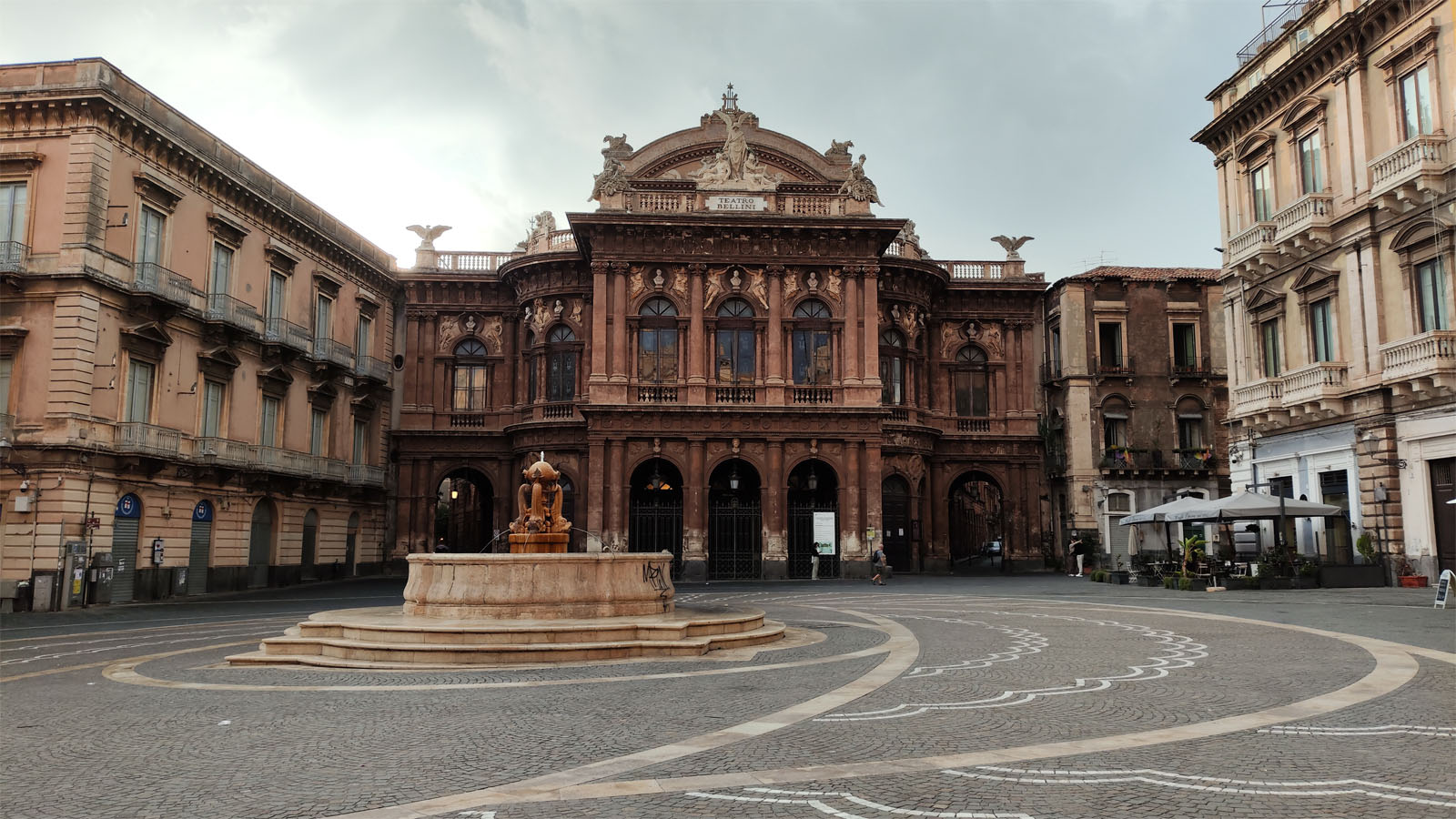
Discover how to make the most of your day in Catania with this self-guided walking route, perfect for cruise passengers. From port arrival to must-see sights, here’s everything you need for a smooth and enjoyable visit.
The cruise port in Catania is conveniently located just a short walk from the city center—about 15 minutes on foot and less than a kilometer in distance. The photo below shows the view from my cruise ship balcony overlooking the port and the city skyline.
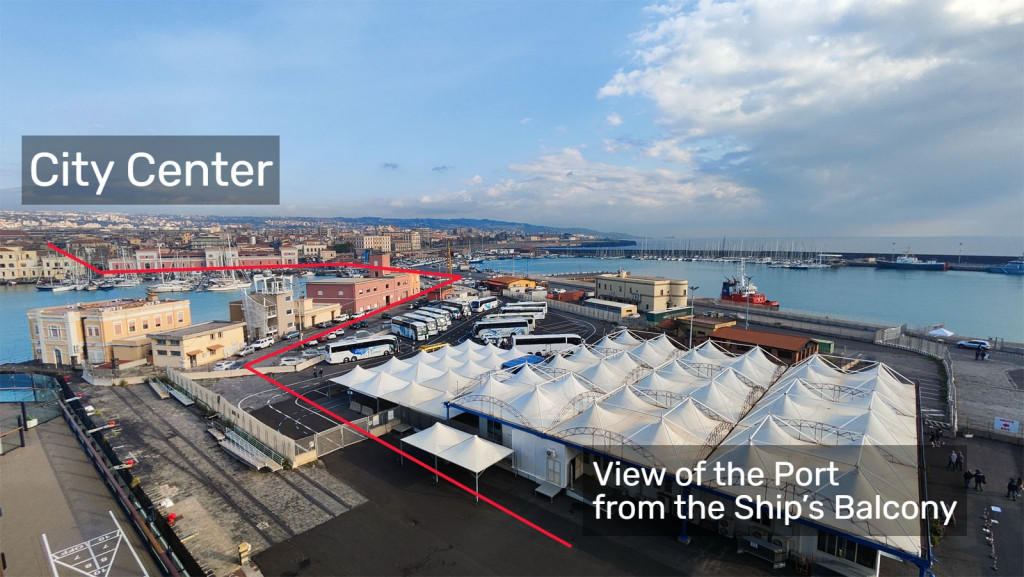
A paid shuttle service to the city center is available for €10, but unless you have mobility issues, there’s little reason to use it—the historic center is within easy walking distance.
Inside the terminal, you’ll find free Wi-Fi and complimentary city maps for tourists.
|
|
Hop-On Hop-Off buses also depart from the port area, offering a multilingual audio guide in 6 languages. The route includes the Catania coastline and continues to the nearby seaside towns of Aci Castello (famous for its lava rock castle) and Aci Trezza. You can check the route and book tickets with free cancellation here.
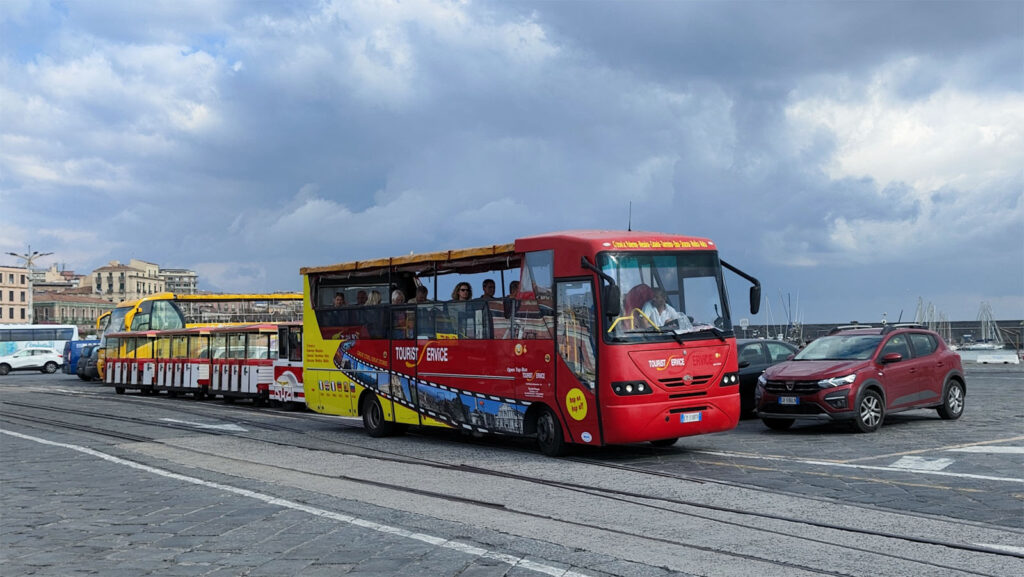
One of the most popular excursions from the Catania cruise port is a trip to Mount Etna—the tallest peak in Sicily and one of the most iconic active volcanoes in Europe.
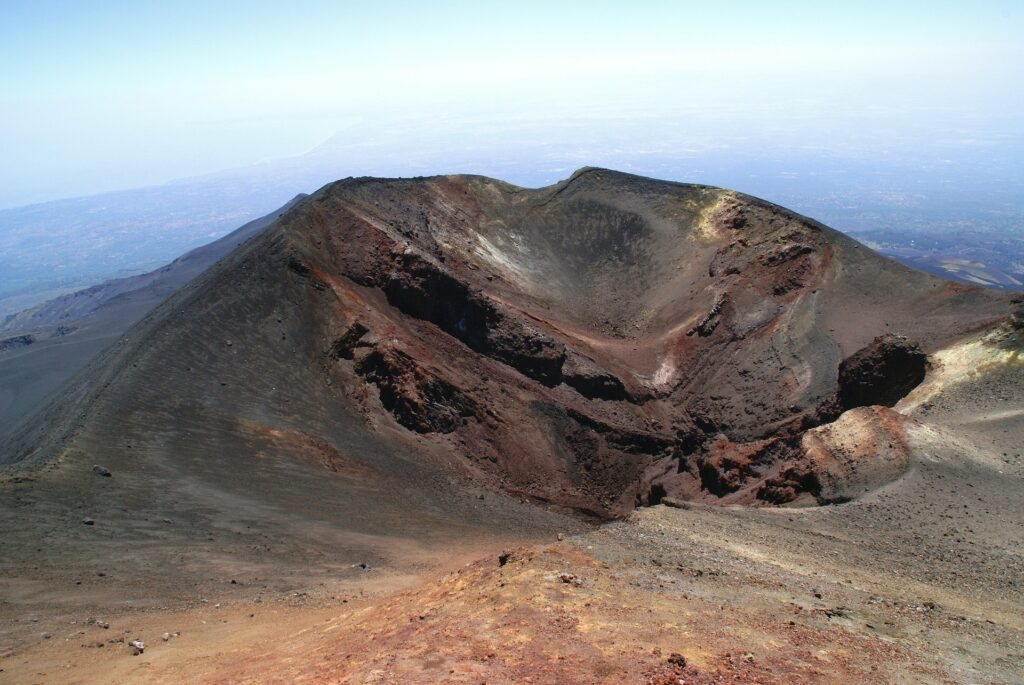
However, cruise-organized tours can be quite expensive, and arranging the visit independently within the limited time of a cruise stop is not easy. To begin with, you’ll need to get to the Etna cable car station, which is the starting point for most climbs. This requires either a taxi (pricey) or public transport (unreliable, with a real risk of missing your ship).
The most practical option is to rent a car, which gives you flexibility and saves time.
Once at the base station, you’ll need to purchase tickets for the cable car. It’s highly recommended to book online in advance via the official website to avoid long lines. The cable car takes you up to around 2,500 meters.
To climb further—to the main crater at about 3,300 meters—you’ll need to join a group with a certified mountain guide. You can either join a group on the spot or book a guided tour in advance here.
After considering all the logistics, I decided to save the full Etna experience for another trip and instead spent the day exploring Catania on foot.
If it’s your first time in Catania and you’re not planning to spend money on guided tours, I recommend simply exploring the city on foot. The historic center is compact and easily walkable.
I’ve marked the must-see spots on this interactive map, with brief descriptions for each one. You can open the map in a new browser tab or in the Google Maps app for easier navigation during your walk.
This is the closest major attraction to the cruise port—you’ll likely pass it first on your way into the city. Palazzo Biscari is a luxurious 18th-century Baroque palace, known for its elegant halls and richly decorated interiors.
You can take a guided tour inside (for a fee), but I didn’t go in. Instead, I explored the inner courtyard, which is open to the public. If you catch it without crowds, the grand staircase is a perfect spot for a photo.
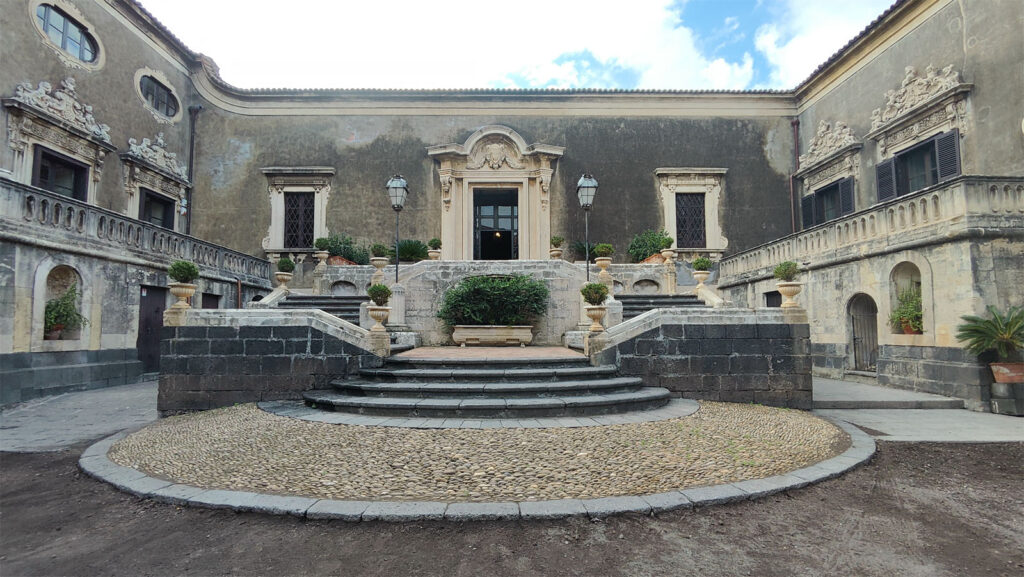
A beautiful church dedicated to Saint Agatha, the patron saint of Catania. Entry is free, and I highly recommend stepping inside to admire the interior.
For €4, you can also climb up to the church’s dome, which offers stunning views of the city—and, on clear days, even Mount Etna.
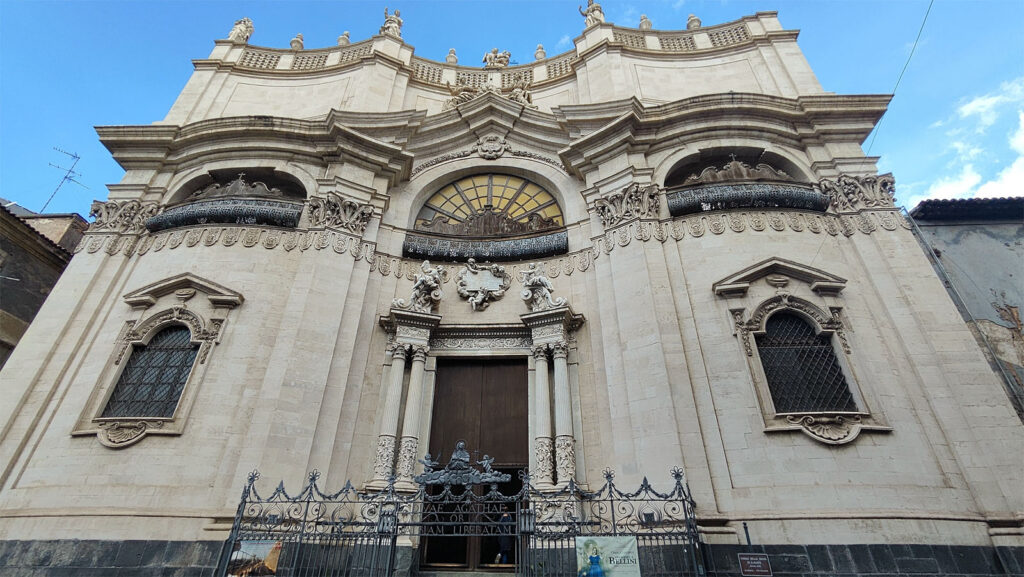
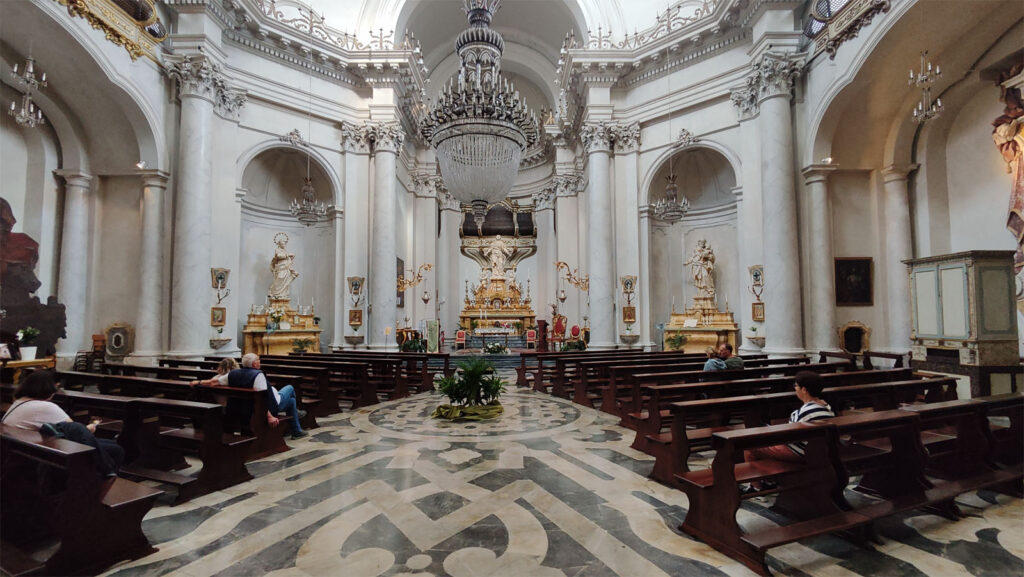
As you exit the church, you’ll find yourself in Piazza del Duomo—Catania’s main square, surrounded by historic buildings. The entire square is a UNESCO World Heritage Site.
Here you’ll see two of the city’s most iconic landmarks: the Elephant Fountain (the symbol of Catania) and the Cathedral of Saint Agatha.
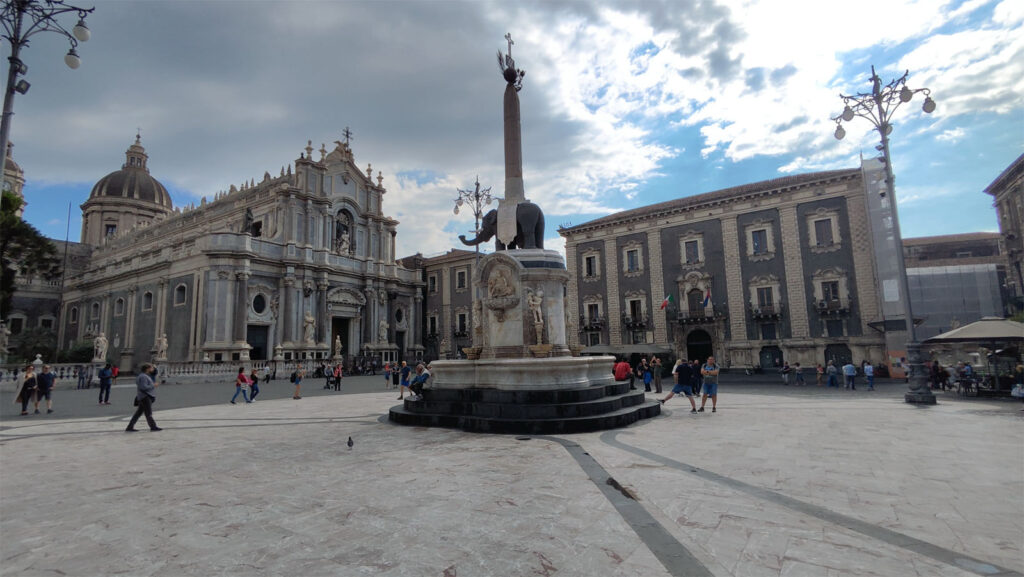
A majestic cathedral dedicated to Saint Agatha, Catania’s patron saint. It houses her relics and serves as the city’s main religious landmark. Entry is free, and the architecture alone makes it worth a visit.
|
|
|
|
The beloved symbol of Catania, located in the heart of Piazza del Duomo.
The statue features a smiling elephant carved from black lava stone, standing on a white marble pedestal. Atop the elephant is an obelisk with Egyptian hieroglyphs, crowned with a cross and symbols of Saint Agatha.
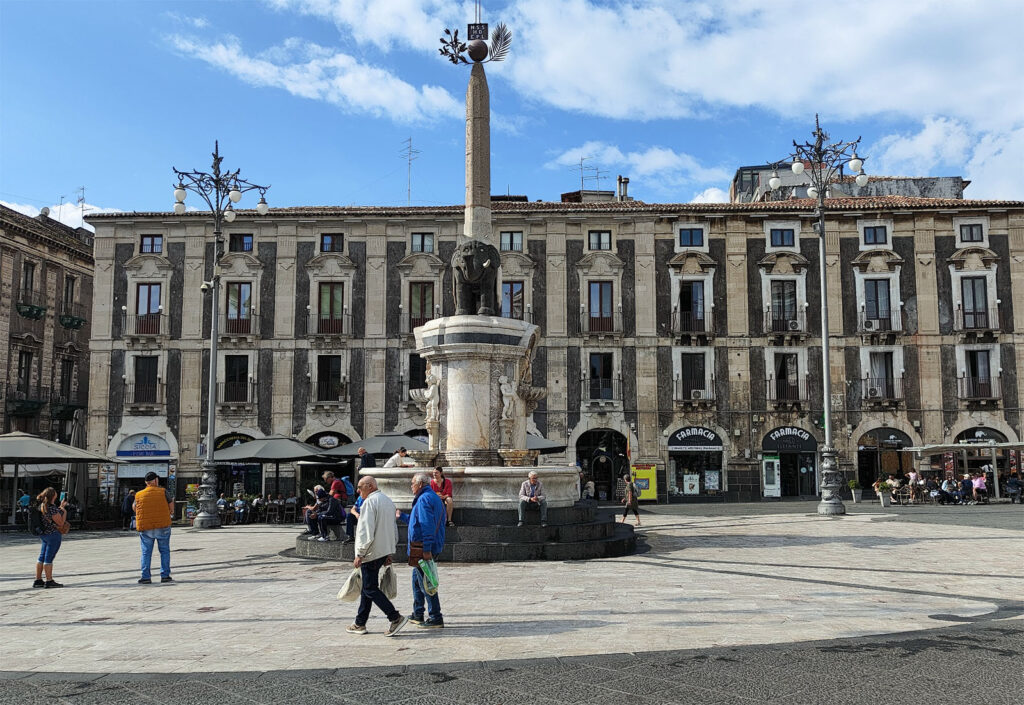
A must-see even if you’re not planning to buy fresh fish. The market offers a burst of local color, scents, and sounds, reflecting the authentic atmosphere of a traditional Sicilian street market.
Cruise travelers might skip the raw seafood, but nearby streets are filled with restaurants where you can enjoy freshly shucked oysters and other local specialties.
|
|
One of the largest monastic complexes in Europe, now home to part of the University of Catania. The area is lively with students, and nearby you'll find the Church of San Nicolò, the largest church in the city—known for its massive, unfinished facade.
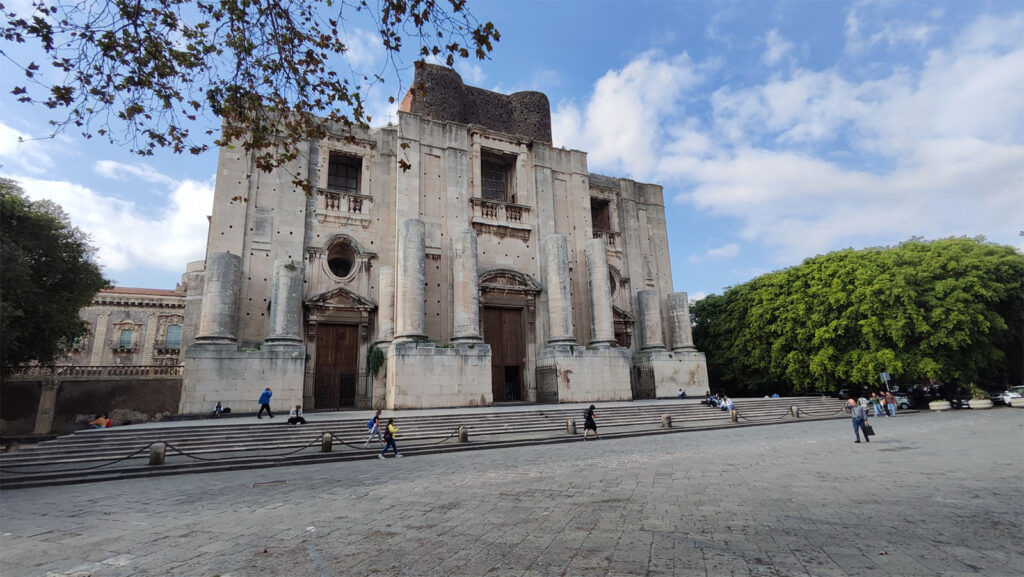
|
|
One of the most beautiful streets in Catania, lined with historic churches and baroque architecture. Ideal for a slow, scenic walk.
|
|
The city’s main shopping street, filled with brand-name stores, cafes, and bars. It stretches from the heart of the old town toward Mount Etna, offering occasional views of the volcano.
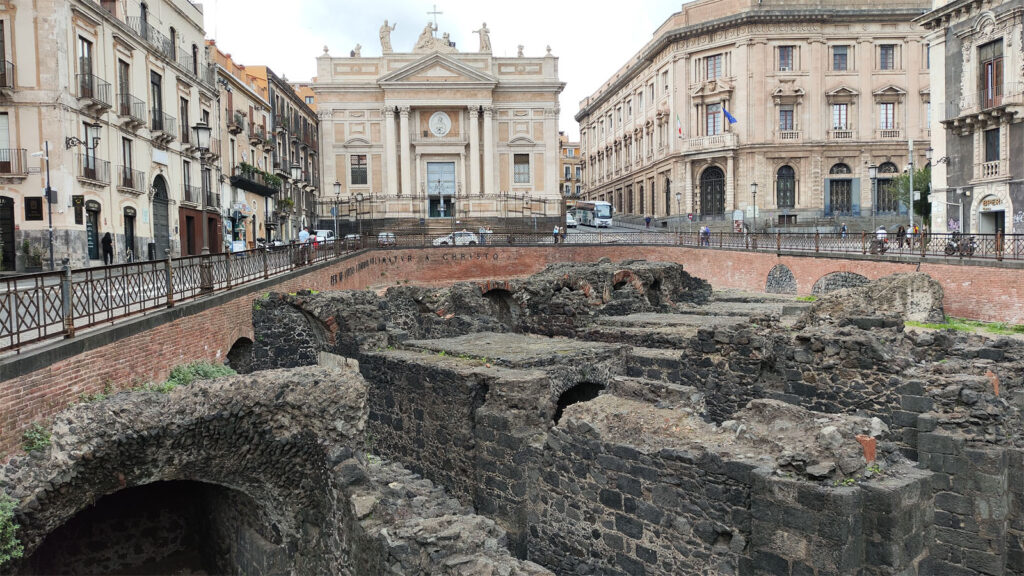
Another elegant square in central Catania, surrounded by historic buildings. A pleasant place to rest, take photos, or enjoy a coffee nearby.
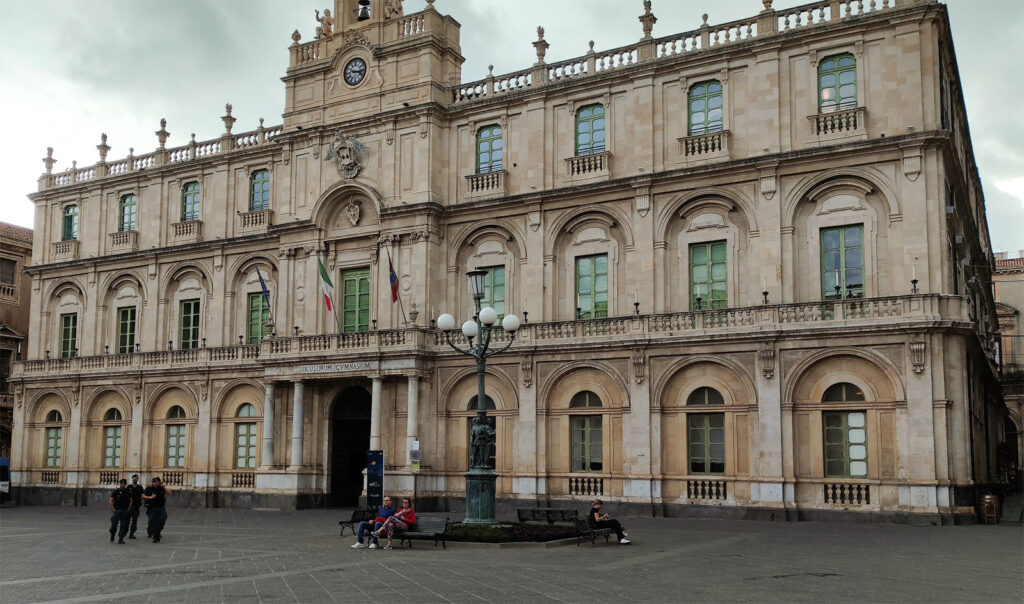
|
|
Catania’s famous opera house, named after composer Vincenzo Bellini. The interior is richly decorated, and the acoustics are world-class. It remains one of the city’s most important cultural landmarks.
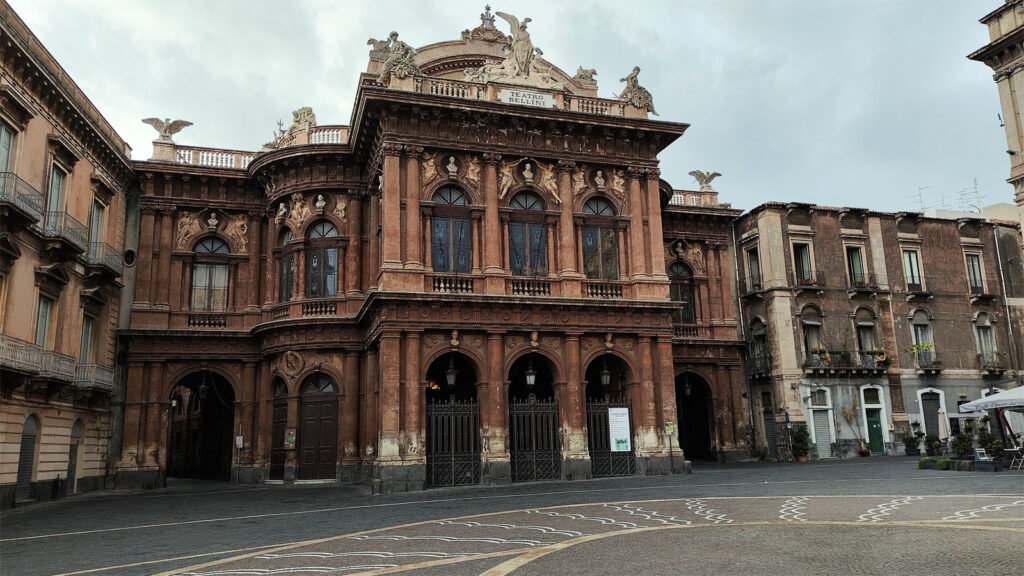
You might also like: